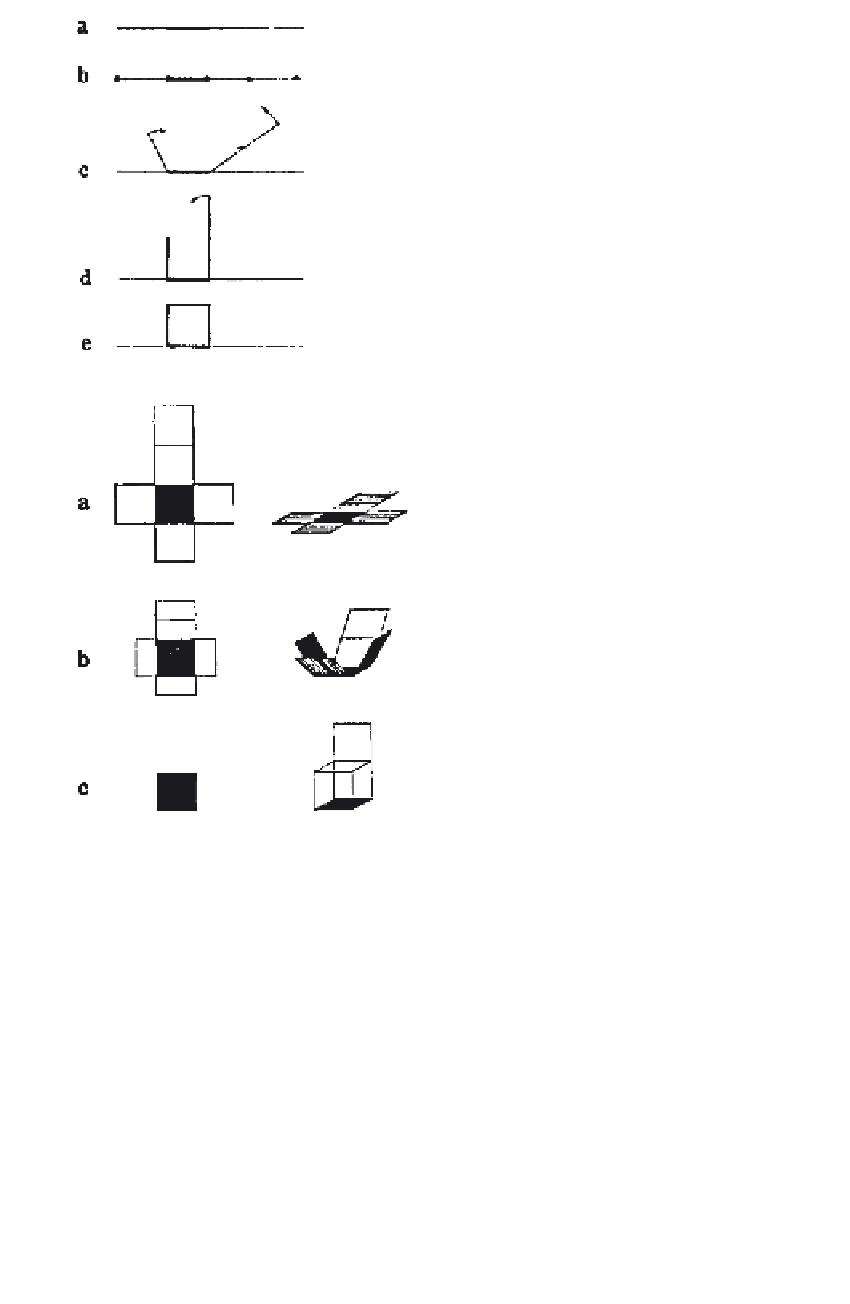Information Technology Reference
In-Depth Information
FIGURE 4. Step-by-step construction of a 2-D cube
(square by folding three 1-D cubes from the source
space (line) around their boundaries (points).
FIGURE 5. Step by step construction
of a 3-D cube (cube) by folding five
2-D cubes (squares) out of the source
space (plane) around their boundaries
(edges).
The construction of (n + 1) = dimensional objects out of corresponding
objects of lower dimensionality can, without difficulty, be developed with a
recursive formula which tells how the (n + 1)-dimensional entity is con-
structed from an analog n-dimensional entity. In Figures 4-6 it is show how,
for example, a four-dimensional “cube” (Tesseract) is step-by-step devel-
oped from a one-dimensional “cube'. The recursive injunction is:
(i) Add one n-dimensional cube each to the 2n boundaries of the n-
dimensional “base cube”, and for completion, add to one of these a
“lid cube.”
(ii) Fold the thus added cubes around the 2n boundaries of the base cube
into the next higher dimension until they stand perpendicular, i.e., until
their normal projections disappear.

Search WWH ::

Custom Search